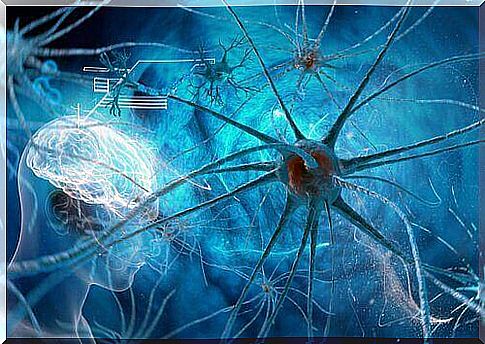Dendrites Are Not Just Passive Links

For many years , neuroscience has used various tools to try to “listen” to the conversations between neurons. Just as linguists try to decipher foreign languages, scientists try to decipher the electronic impulses of neurons. In this connection, it seems that dendrites are an essential part of modern neuroscience.
The latest research has shown that neuroscience has only seen the tip of the iceberg, which is human brain capacity. Researchers at UCLA discovered a hidden layer of neural communication through the dendrites. This means that the brain’s capacity can be up to 100 times greater than previously thought.
This discovery may change the basis of conventional neuroscience. Until a few months ago, neuroscience was founded on the belief that dendrites were passive links. Researchers believe that they only carried electrical signals to the cell body, also called soma. But this new research shows that dendrites are much more than just passive connections. They generate electrical signals in peaks that are five times larger and more frequent than neurons.

Are dendrites intelligent? What does this discovery mean?
Among other things, it means that it is possible that learning takes place at the level of dendrites, as opposed to in soma.
Conventional neuroscience has argued that the electrical signals emitted by cell bodies are the basis of our cognitive abilities. Now, however, we know that dendrites do not have a passive function. In fact, they also send out their own electrical signals.
Researchers also discovered that dendrites are actually intelligent. In other words, that they are able to adjust their electrical signals over time. So far, researchers have only observed this type of plasticity in the soma of neurons. This suggests that dendrites can learn on their own.
Since dendrites are much more active than cell bodies, we can begin to suspect that much of the information generated in a neuron is actually generated at the level of the dendrites. That is, dendrites can act as a computer device and process their information. This is a level of independence no previous suspect.
The capacity of the brain
Dr. Mayank R. Mehta’s team of researchers developed a system for placing electrodes near dendrites in the brains of rats. This system allows them to pick up electronic signals from the rats during the time they are awake and performing their daily activities, as well as when they are asleep. They were able to listen to the electrical activity of the dendrites over a period of four days.
The researchers implanted the electrodes in the rats’ occipital lobe. They concluded that when the animals slept, the electrical signals resembled irregular waves. They discovered peaks in each of the waves.
In other words, while the rats slept, the dendrites communicated. They communicated with electrical signals that were up to five times faster than the signals coming from the neuron’s cell body. When the rats were awake, the speed of the electronic signals was ten times faster.

Dendrites are here and now
Another shocking discovery these researchers found during this study was the type of signal the dendrites emitted. Dendrites’ electronic signals can be digital, but they also show large oscillations, almost twice as large as the spinal cord itself. This means that dendrites show analog activity for computing. This is something researchers have not seen before in the activity patterns of neurons.
What this type of dendritic activity calculates seems to be related to time and space. By observing the rats after placing them in a maze, the researchers were able to distinguish between two different types of signals. One type came from the cell body itself, in the form of an increase, as an expectation of behavior. In this case, the climb came just before the rats went around a corner. Meanwhile, the dendrites gave their signals just as the rat rounded the corner.
It may therefore now appear that neuroscience has underestimated the brain’s ability to perform calculations. Since dendrites are a hundred times larger than soma, we can assume that the brain actually has a hundred times more processing capacity. It seems that nerve cells are no longer the basic unit for calculations in the brain.









